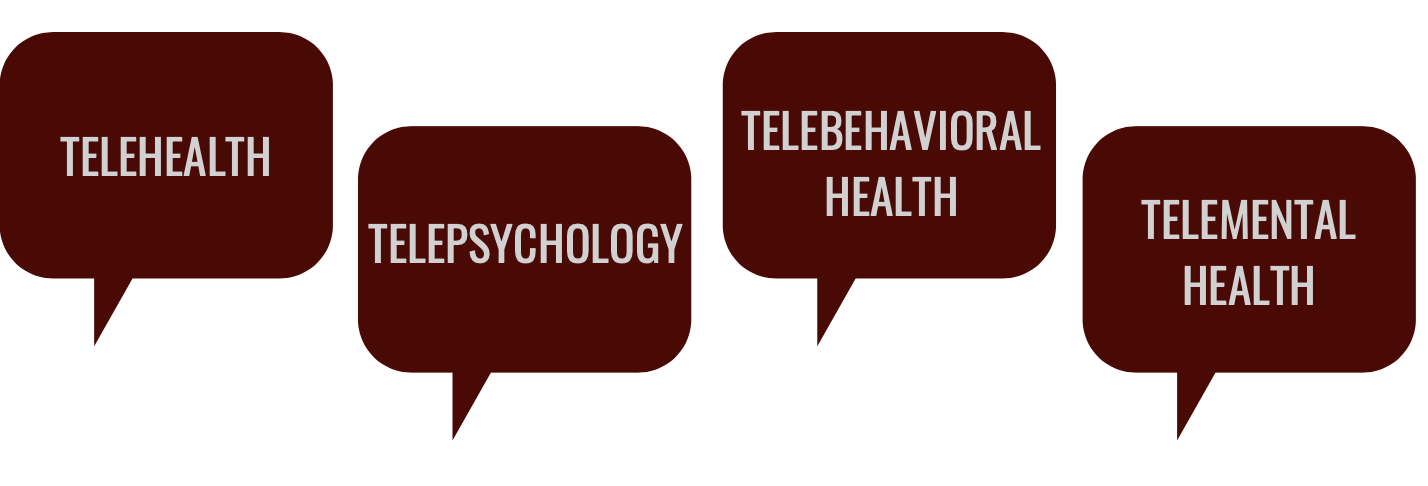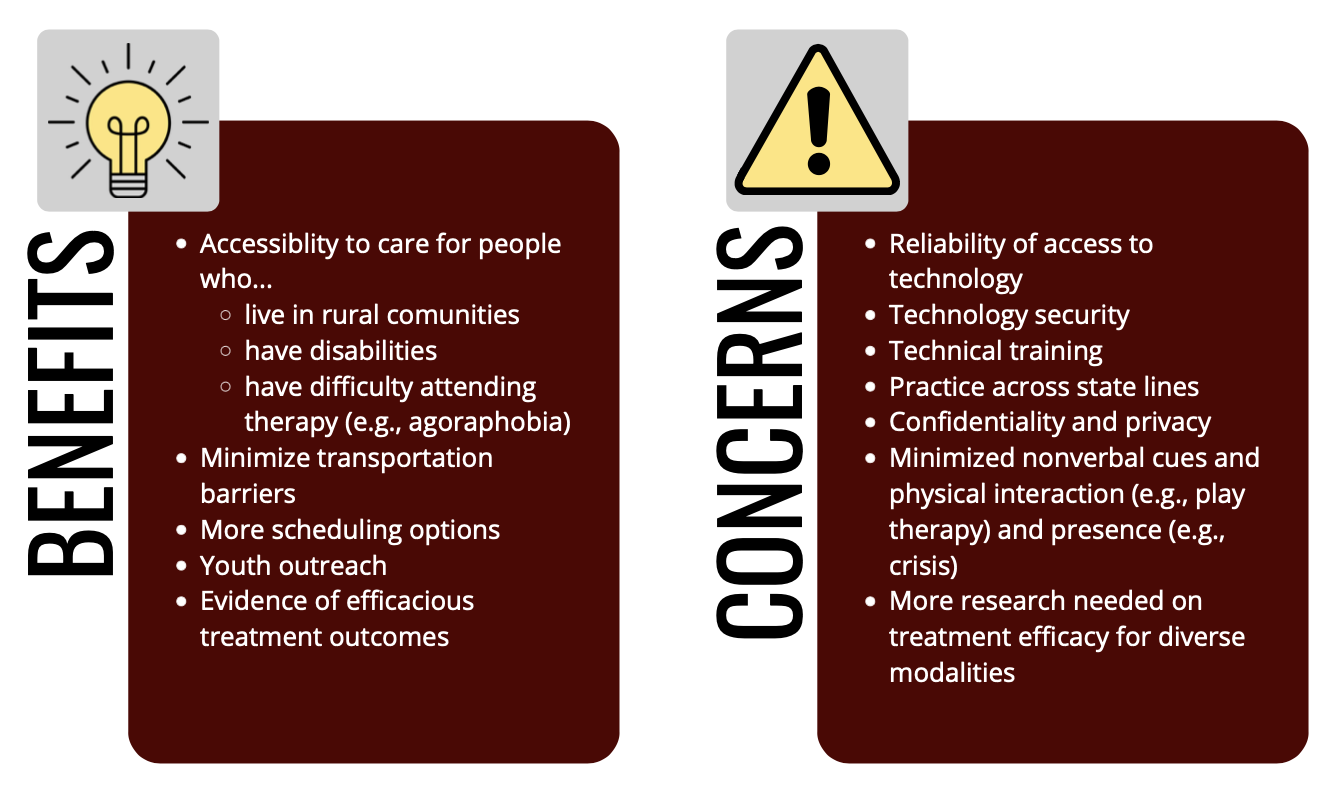Module 2: Introduction to Telepsychology
Module Created by Krystal Simmons, Ph.D., LSSP., L.P., NCSP

Terminology
Telehealth traditionally refers to the provision of medical care, telepsychology (and related terms) refers to the provision of mental health/behavioral care services utilizing technological modalities. These modalities include:
- Video teleconferencing
- Telephone
- Text messaging
- Online chat
- Applications
From the advent of telemedicine in the 1960s for NASA personnel to the sudden need for alternate care solutions in response to the COVID-19 lockdown, providing care through digital platforms has gone through an interesting evolutionary journey. Barriers specific to technology expansion, lack of regulatory frameworks, and minimal training inhibited the use of its adoption (Gruessner, 2015). Furthermore, health professionals’ skepticism of utilizing a remote platform to provide health care contributed to minimized practice and research investigating the efficacy of telehealth care services in its many forms. During 2020, when the COVID-19 pandemic limited in-person service provision, many clinicians, agencies, and training sites were forced into telehealth care, which furthered the need for expansion in all sectors: training, technology, research, and treatment approaches. Note: You may see the terms telepsychology, telebehavioral care, telepsychological services, and telehealth be used interchangeably across TPSYC 101 modules.
Self-Assessment
Oftentimes, there are barriers to providing telepsychology services appropriately that occur among trainees/clinicians and clients/patients. Typical barriers as described by Felker (2020) include:
Provider-level barriers
-
-
- Lack of training/exposure to telepsychology
- Isolation from peers/colleagues that leads to fewer informal consultations and low morale
- Safety/ Apprehension about telepsychology due to possible crisis situations
-
Patient-level barriers
-
-
- Therapeutic alliance
- Patient age and unfamiliarity with technology
-
Trainees should take numerous steps prior to engaging in telehealth/telepsychology care. One of the firsts is assessing self-competence to engage in telepsychology in the following areas (Martin et al., 2020):
-
-
- Intellectual competence
- Technical competence
- Emotional Competence
- Cultural competence
- Clinical competence
-
Trainees should have access to training and supervision before practicing or researching with telepsychology.The TPSYC 101 platform was developed to supplement a comprehensive telepsychology training program. Reading articles, discussing case studies, role-playing, and supervision are all instrumental to developing competent practice skills. Once your knowledge, skills, and abilities (KSAs) improve in this area, competency assessments are also encouraged when determining if telepsychology is appropriate for your individual clients (Martin et al., 2020).
KSAs are not the only factors contributing to successful telepsychology practice. There is significant importance of space. Several modules within the TPSYC 101 site will review procedures for how to set up your space; refer to those for more details. Consider with telepsychology sessions, your clients are only seeing a limited part of your space, which will be the background behind you during the telehealth sessions. It is important to set up a background that is coherent and not too distracting. In general, be thoughtful about your décor selection and arrangement, then consider how that background looks on-screen, before the first session. For tips on how to set up your space for telehealth sessions, click HERE.
Finally, your client has responsibilities for ensuring successful service provision. Telepsychology may not work for everyone and it is not a one-size-fits-all approach to services. Consider these steps when determining appropriateness:
-
-
- Inquire if the client has the capability to make the decided method of contact happen
- Do they have a data plan that allows this communication to happen weekly?
- Do they have capabilities to download apps? Receive and upload documentation using your chosen technology platform or application?
- Do they have a private space to have these meetings?
- Do they have access to a stable internet connection?
- Do they have a device that will work with your telehealth platform?
-
Benefits and Concerns
There are many benefits to telehealth care but with all approaches, there are pros and cons to its use.
APA. (2014). What are telehealth and telepsychology. Retrieved from https://www.apa.org/pi/disability/resources/publications/telepsychology?tab=1

Video
The following video will demonstrate considerations for preparing for a telehealth session. The purpose of this video is to observe the recommendation of conducting a preparedness check with a second person prior to meeting with clients during a videoconference. In addition, the video is an example of the importance of the state of your space and background when conducting telepsychology services.
Resources
References
APA Guidelines for the Practice of Telepsychology: https://www.apa.org/practice/guidelines/telepsychology
American Telemedicine Association’s Practice Guidelines for Video-based Online Mental Health Services: https://www.integration.samhsa.gov/operations-administration/practice-guidelines-for video-based-online-mental-health-services_ata_5_29_13.pdf
